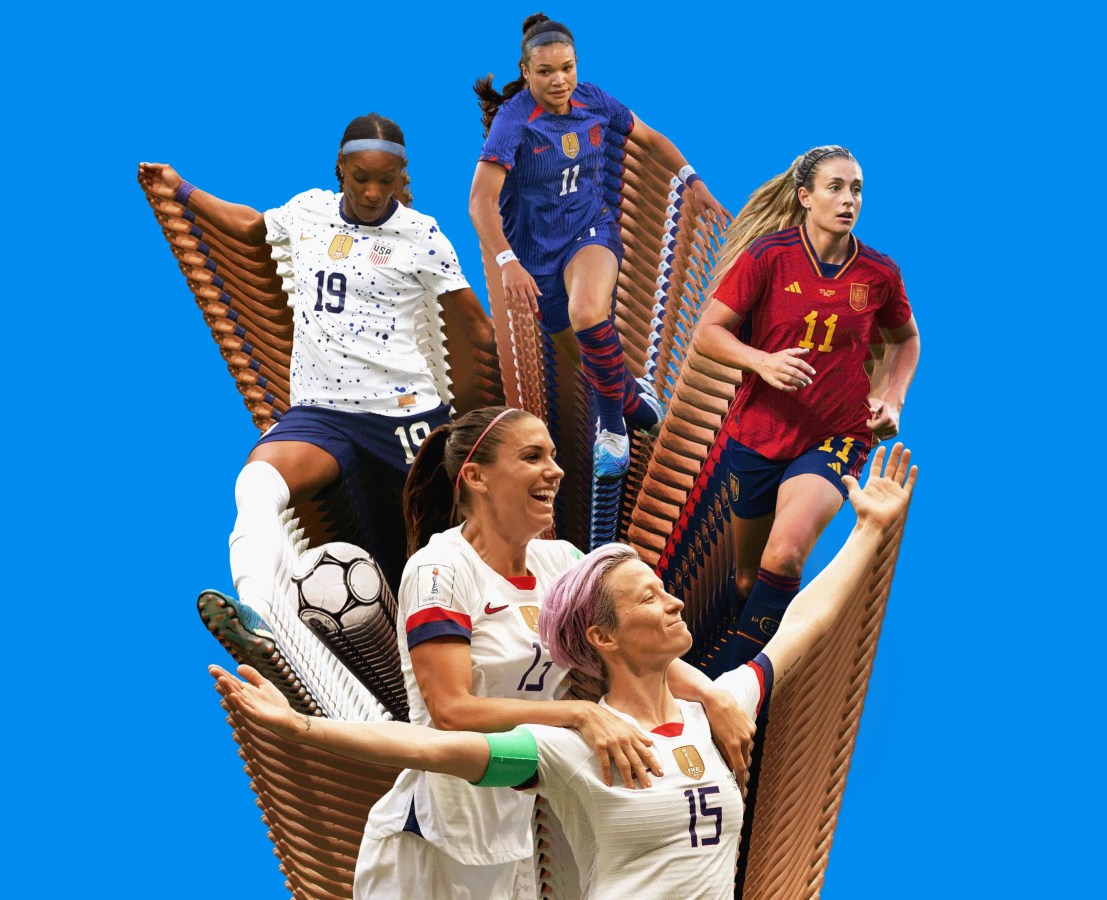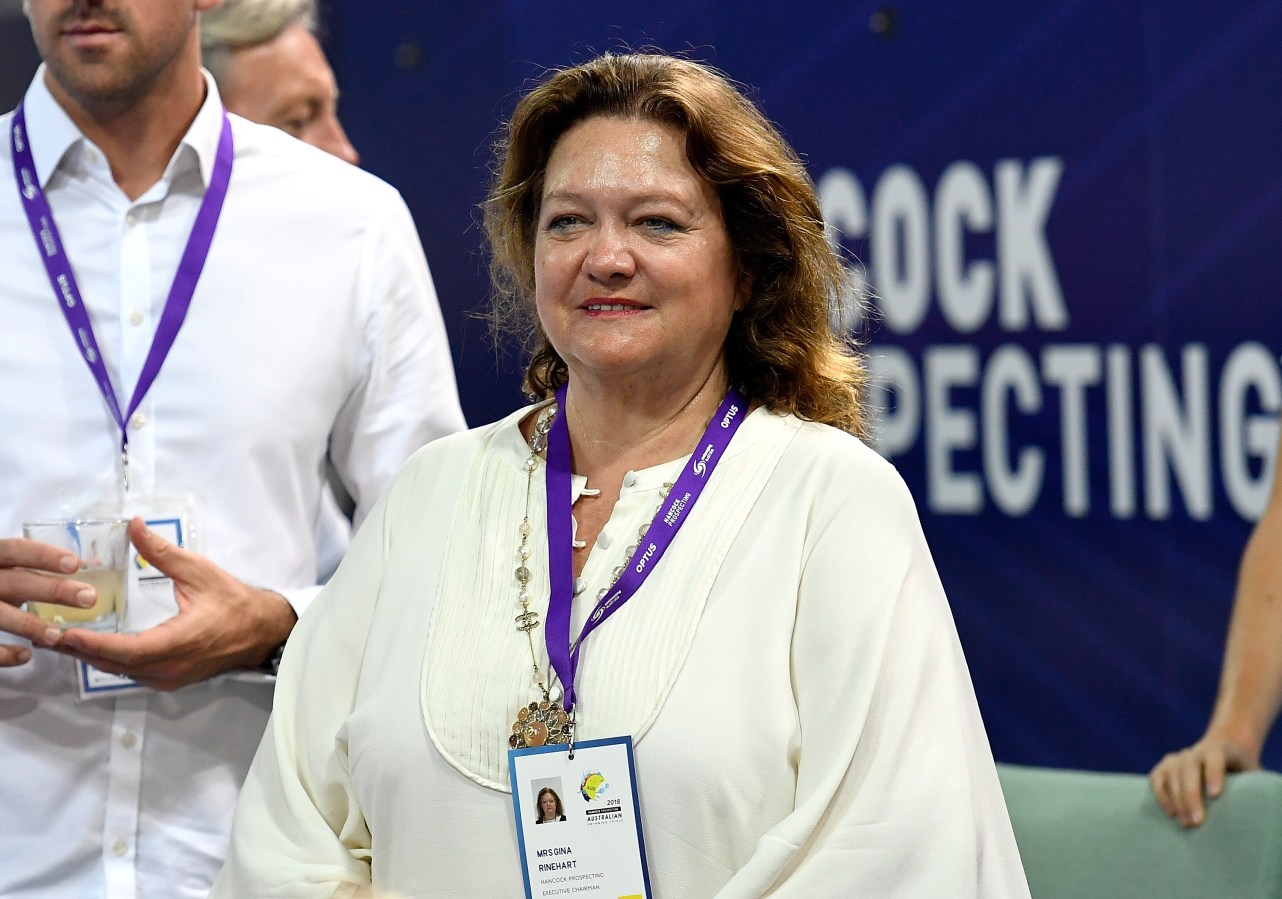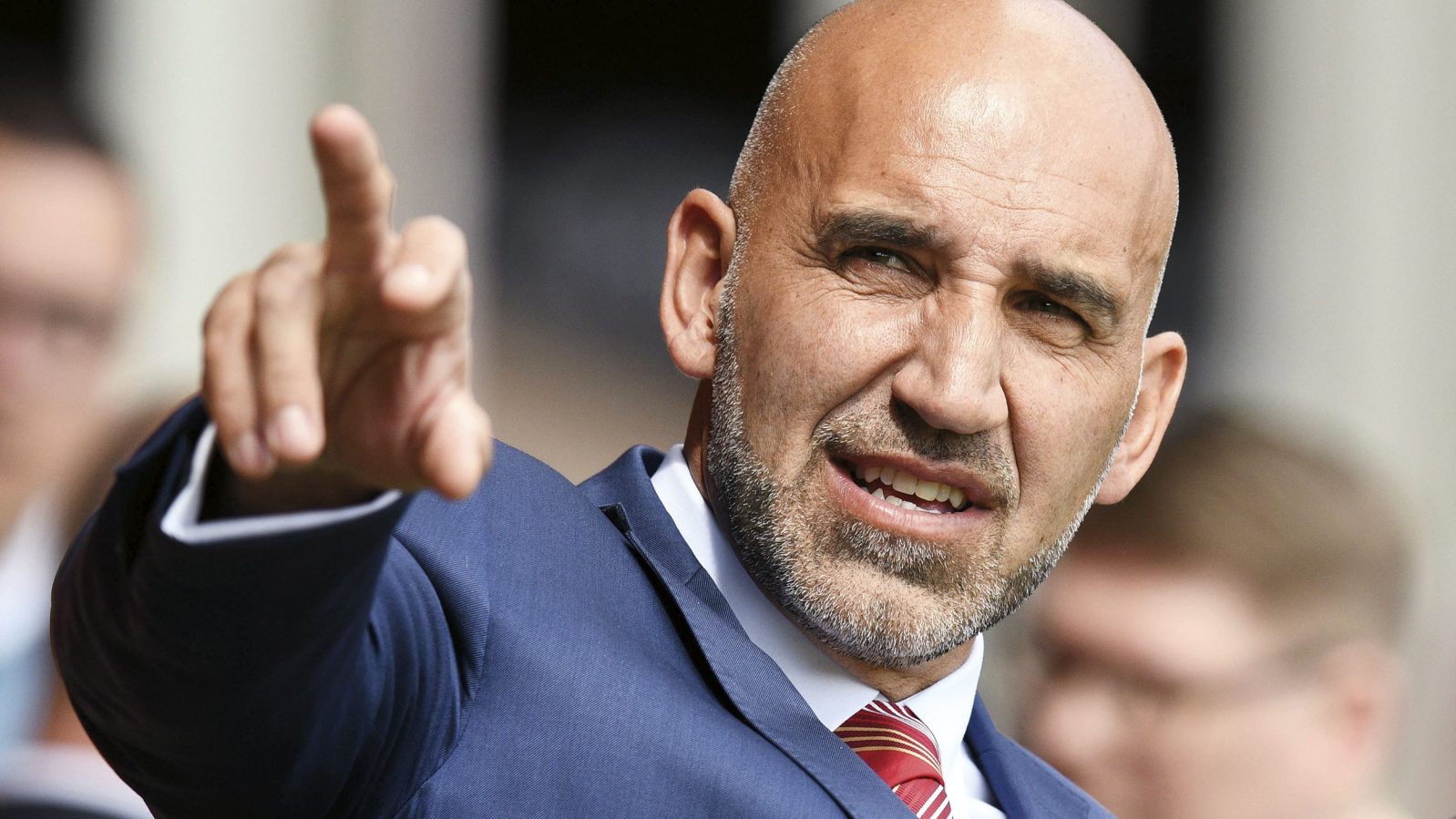The Matildas may be out of World Cup victory contention. But the call for increased funding continues. The Matildas brand value has quadrupled, and the economic value of the Australia and New Zealand games has been no small feat. Meet the man who made the World Cup happen.
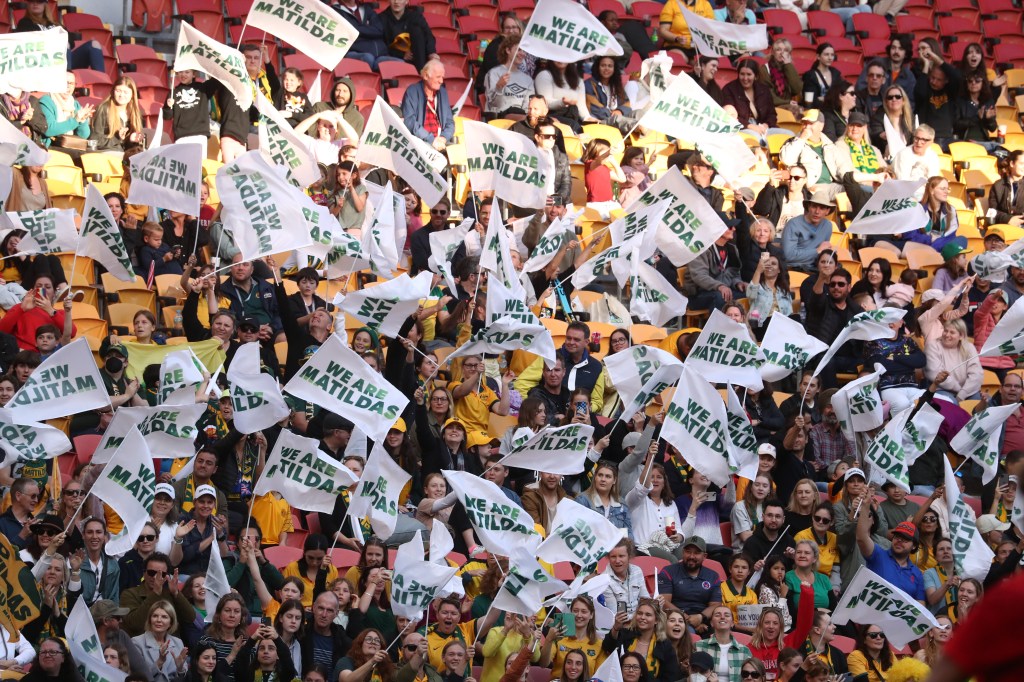
“Dollars, pounds, yen, euros, pesos and dinar are pouring into Australia to the tune of an extra $7.66 billion thanks to the Matildas and the World Cup,” says Luke Latham, Airwallex General Manager for Australia and New Zealand. “In the current environment this has been a screamer of a goal for the Australian economy.”
The man who kicked the first goal in bringing the World Cup down under, is James Johnson. As CEO of Football Australia, Johnson set his sights on both localising, and globalising, soccer.
“We went very hard to get the Women’s World Cup back to our shores,” Johnson told Forbes Australia. “It was a case of bringing one of the biggest sporting events in the world, bringing it back to the local community.”
Johnson has been a proponent of keeping community at the core of the Matildas brand from his first day on the job in 2020.
“We are the biggest club participant sport in the country,” says Johnson, who oversees the Socceroos soccer club as well as the Matildas. “There is no other sport that exists in Australia where women’s and men’s national team brands are as strong. So you are really targeting 100-percent of the community.”
Johnson leveraged the opportunity of both boys and girls being engaged in soccer by putting together deals that connected everyday Australians with the national teams.
“We were able to bring Commbank in, and Commbank talk to modern day Australia everyday. Just like we want to be able to talk to modern day Australia everyday,” says Johnson. He also struck sponsorship deals with Priceline and Cadbury, and pushed to make sure that games were accessible to a wide audience.
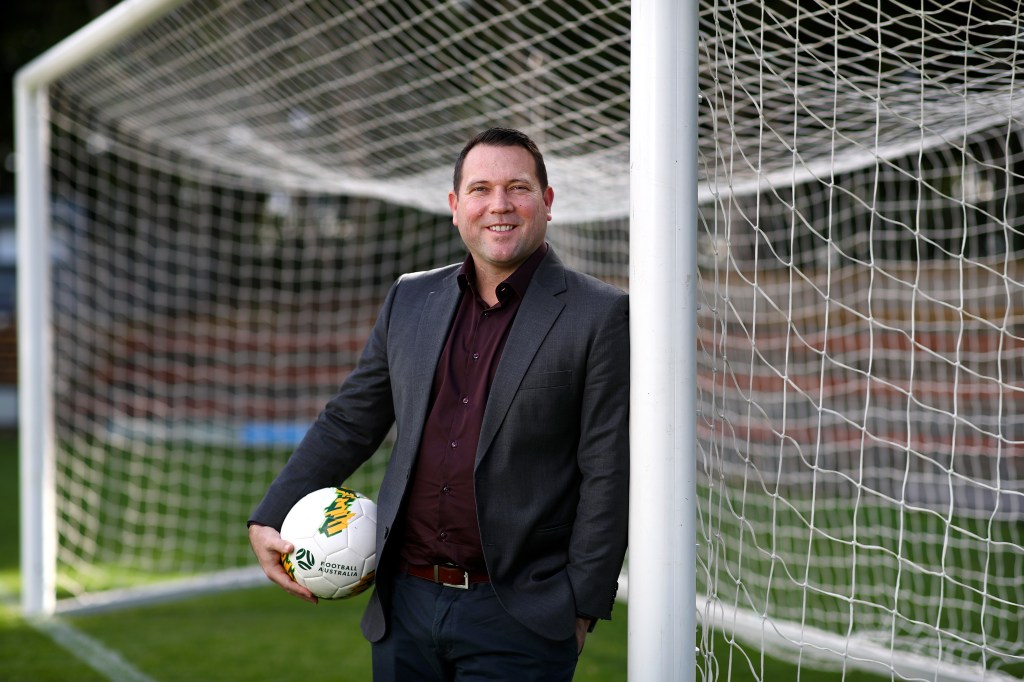
“We changed our broadcaster, we went to free to air and the logic behind that is we wanted to reach a broader community,” Johnson says about the deals he has done with Channel 10, Channel 7 and Optus. “It was a real change in how the business worked here. Once we got the broader reach, we were able to bring in partners that one, wanted the reach, but could also do the storytelling for the brand.”
In 2022, Johnson negotiated a deal with Disney+ for a six-part docuseries.
‘Matildas: The World At Our Feet‘ personalized the Australian women’s team and brought a behind-the-scenes athlete perspective into Australian living rooms. Released in March this year, it is the first Disney+ Original documentary commissioned for the Australian market and is now also available to Disney+ audiences around the globe.
“They are the best storytellers in the world,” says Johnson of Disney. “They told the story of the team but also the individual players in the lead up.”
Matildas vice-captain Steph Catley acknowledged in a post-game interview this week that there has been a shift in engagement with womens soccer. “People are interested. The numbers are there. Kids are playing. People want to be watching the sport,” says Catley.
In light of that engaged audience, Catley called for increased funding for the game in Australia. “Football is very much not funded the way it should be. Hopefully this has just been enough to prove that and to create the argument and to improve facilities, improve standards for women in football, football in general,” says Catley.
Australia Sam Kerr agrees. “I can only speak for the Matildas. We need funding in our development. We need funding in grassroots. We need funding. We need funding everywhere,” says Kerr.
Richard Marles, Deputy Prime Minister responded to the call for increased funding in an interview with Channel Nine on Friday. “Firstly, we put $84 million into this World Cup, this Women’s World Cup, and $40 million of that was into grassroots sport for girls taking up football, so a lot of money has been spent on women’s sport,” says Marles.
A spend of $84 million for an outcome of $7.6 billion in increased revenue was highly lucrative for the Australian government.
With the nation at fever-pitch this week about women’s soccer, Johnson says the outcome of the final either way is a win. Mark Crowe from Brand Finance Australia agrees.
“Prior to the world cup, Matilda’s brand value would have been $40-$45 million. Over the next three years potential value will rise to $175-$210 million,” Crowe says. He notes that brand strength will be realized with new sponsorship deals and media rights negotiations.
The economic impact that the event has had on the country is also a big win. 1 in 5 ticket holders are from overseas, according to FIFA data. Airwallex says Australian hotels and retailers have seen a $4.53 billion influx of tourism dollars.
More than 11 million Australians watched the England game last night, making it the most watched program since OzTam began keeping records. Almost 5 million people watched the Matildas beat France on August 14.
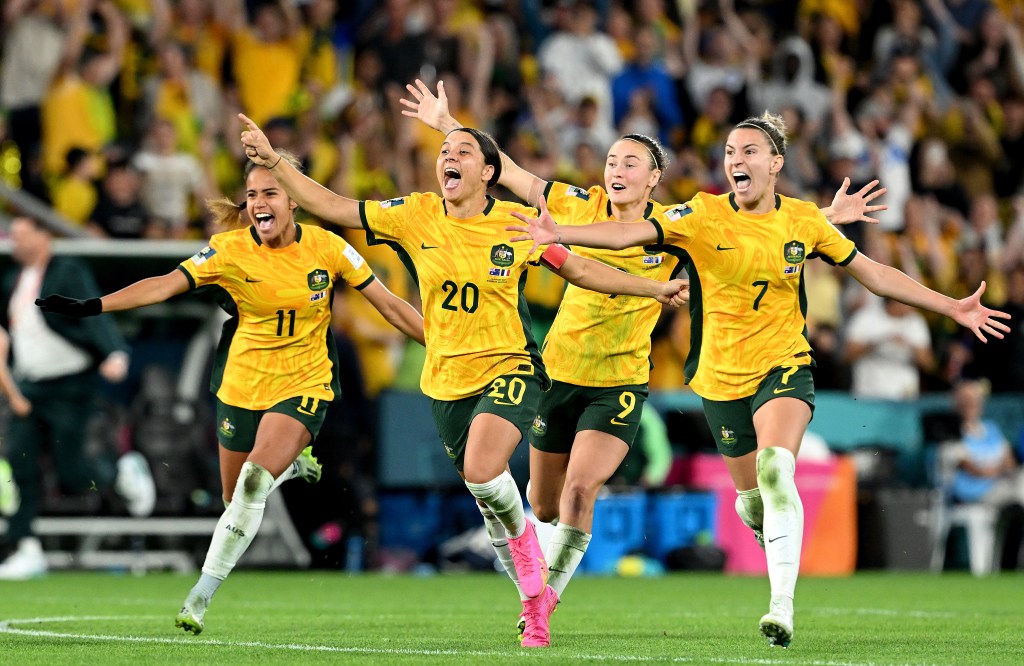
“However the Matildas did in the competition was always going to be a bonus,” says Johnson. “We thought that we could bring Australia along, we look at the legacy of the Womens World Cup and not just the month we are having now.”
The legacy that the Matildas and Socceroos are pioneering, includes a landmark Collective Bargaining Agreement with FIFA signed in 2019. The deal gives Australian national players a 22% share of revenue in 2023. It also upgrades the women’s team to the same business class flights and training facilities that the Socceroos receive. It’s an equality-driven model that has inspired other sporting clubs around the world.
There is still a large gap between the $440-million prizemoney that FIFA offers in the men’s league, and the $110-million that FIFA makes available in prizemoney in the women’s competition. Each player on the winning team of the men’s division personally pockets US$4.29 million. In comparison, the Women’s World Cup awards players on the winning team just US$270,000.
Johnson is supportive of FIFA closing that gap and says maximizing player revenue ensures that the athletes are singularly focused on improving their game. He notes that the Australian men’s and women’s teams are united in their vision for pay parity in the sport, and the legacy they are proud to be pioneering.
“I think it’s been a good thing not just for football, but also for Australian sport. Because you’ve got this emerging brand that looks very different to the traditional Australian sporting model,” says Johnson. “We have happy partners, but we also have a happy Football Australia.”
